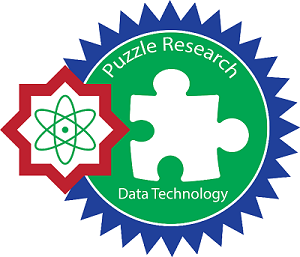ADDITIONAL MENU
Lepidoptera Classification Using Convolutional Neural Network EfficientNet-B0
Abstract
Butterflies and moths are insects that have many different species. Butterflies and moths have considerable aesthetic, ecosystem, health, economic, health, and scientific values. However, because there are so many different varieties and patterns, it is vital to divide them by type for better identification. By creating a Convolutional Neural Network (CNN) algorithm that produces accurate results, a deep learning approach can be used to classify the types of butterfly and moth species. This paper offer an Lepidoptera including butterfly and moth classification model based on convolutional neural networks. 3390 images of 25 different butterfly and moth species were acquired with various images orientations, angles, distance, and background. Using the EfficientNet-B0 CNN architecture, different types of butterflies and moths are classified and input into the EfficientNet-B0 model. EfficientNet-B0 performs feature extraction on the image, so that it can be used to perform classification and then combined through a pooling process and connected to the final layer to produce a classification probability. The probability indicates how likely the image is to belong to a particular type or class of butterfly or moth. In comparison to earlier studies, the test results indicate an improvement in butterfly and moth classification. Increased accuracy was seen with values of 97.91% accuracy, 97% recall, 97% precision, and 97% F1-Score. This paper novelty is the enhancement of the CNN architecture EfficientNet-B0 used in image classification, which results in improved image classification accuracy.
Keywords
Image Classification; Butterfly; Moth; CNN; EfficientNet
Full Text:
PDFReferences
F. Fauzi, A. E. Permanasari, and N. A. Setiawan, “Butterfly Image Classification Using Convolutional Neural Network (CNN),” in 2021 3rd International Conference on Electronics Representation and Algorithm (ICERA), 2021, pp. 66–70.
N. E. Stork, “How Many Species of Insects and Other Terrestrial Arthropods Are There on Earth?,” Annu. Rev. Entomol., vol. 63, no. 1, pp. 31–45, Jan. 2018.
A. S. Almryad and H. Kutucu, “Automatic identification for field butterflies by convolutional neural networks,” Eng. Sci. Technol. an Int. J., vol. 23, no. 1, pp. 189–195, 2020.
R. Yasmin, A. Das, L. J. Rozario, and M. E. Islam, “Butterfly detection and classification techniques: A review,” Intell. Syst. with Appl., vol. 18, p. 200214, May 2023.
S. Kallapur, M. Hegde, A. D. Sanil, R. Pai, and S. NS, “Identification of aromatic coconuts using image processing and machine learning techniques,” Glob. Transitions Proc., vol. 2, no. 2, pp. 441–447, Nov. 2021.
A. Susanto, C. Atika Sari, I. U. W. Mulyono, and M. Doheir, “Histogram of Gradient in K-Nearest Neighbor for Javanese Alphabet Classification,” Sci. J. Informatics, vol. 8, no. 2, pp. 289–296, Nov. 2021.
A. A. Hakim, E. Juanara, and R. Rispandi, “Mask Detection System with Computer Vision-Based on CNN and YOLO Method Using Nvidia Jetson Nano,” J. Inf. Syst. Explor. Res., vol. 1, no. 2, Jul. 2023.
N. P. Damayanti, A. Dwiantoro, I. Maulana, R. Nandita, and A. Zahra, “Artificial Intelligence ( Ai ) Imaging for Enhancement Of Parking Security,” J. Student Res. Explor., vol. 1, no. 1, pp. 15–20, 2023.
N. S. ALKolifi ALEnezi, “A Method Of Skin Disease Detection Using Image Processing And Machine Learning,” Procedia Comput. Sci., vol. 163, pp. 85–92, 2019.
H. Hadi, H. Radiles, R. Susanti, and M. Mulyono, “Human Face Identification Using Haar Cascade Classifier and LBPH Based on Lighting Intensity,” Indones. J. Artif. Intell. Data Min., vol. 5, no. 1, p. 13, May 2022.
X. Jia, X. Tan, G. Jin, and R. O. Sinnott, “Lepidoptera Classification through Deep Learning,” in 2020 IEEE Asia-Pacific Conference on Computer Science and Data Engineering (CSDE), 2020, pp. 1–6.
A. Tan, G. Zhou, and M. He, “Rapid Fine-Grained Classification of Butterflies Based on FCM-KM and Mask R-CNN Fusion,” IEEE Access, vol. 8, pp. 124722–124733, 2020.
N. Arzar, B. Sabri, N. F. Mohd Johari, A. Amilah, M. Noordin, and S. Ibrahim, Butterfly Species Identification Using Convolutional Neural Network (CNN). 2019.
M. Tan and Q. Le, “Efficientnet: Rethinking model scaling for convolutional neural networks,” in International conference on machine learning, 2019, pp. 6105–6114.
Gerry, “Butterfly & Moths Image Classification 100 species,” Kaggle. Apr-2023.
I. M. Ramadhan, J. Jaril, S. Sanjaya, F. Yanto, and F. Syafria, “Image Classification of Beef and Pork Using Convolutional Neural Network Architecture EfficientNet-B1,” Indones. J. Artif. Intell. Data Min., vol. 6, no. 1, pp. 54–62, 2023.
B. Prasetiyo, Alamsyah, M. F. Al Hakim, Jumanto, and M. H. Adi, “Differential augmentation data for vehicle classification using convolutional neural network,” 2023, p. 040001.
L. Alzubaidi et al., “Review of deep learning: concepts, CNN architectures, challenges, applications, future directions,” J. Big Data, vol. 8, no. 1, p. 53, 2021.
J. Jumanto, F. W. Nugraha, A. Harjoko, M. A. Muslim, and N. A. Noralhuda, “Mix histogram and gray level co-occurrence matrix to improve glaucoma prediction machine learning,” J. Soft Comput. Explor., vol. 4, no. 1, pp. 13–22, Dec. 2023.
Z. Li, F. Liu, W. Yang, S. Peng, and J. Zhou, “A Survey of Convolutional Neural Networks: Analysis, Applications, and Prospects,” IEEE Trans. Neural Networks Learn. Syst., vol. 33, no. 12, pp. 6999–7019, 2022.
M. Sandler, A. Howard, M. Zhu, A. Zhmoginov, and L.-C. Chen, “MobileNetV2: Inverted Residuals and Linear Bottlenecks,” in 2018 IEEE/CVF Conference on Computer Vision and Pattern Recognition, 2018, pp. 4510–4520.
C. Tan, F. Sun, T. Kong, W. Zhang, C. Yang, and C. Liu, A Survey on Deep Transfer Learning. 2018.
Ü. Atila, M. Uçar, K. Akyol, and E. Uçar, “Plant leaf disease classification using EfficientNet deep learning model,” Ecol. Inform., vol. 61, p. 101182, 2021.
B. Walraven, “Boost your CNN with the keras imagedatagenerator,” Medium. Medium, Feb-2019.
Y. Wu et al., “Demystifying learning rate policies for high accuracy training of deep neural networks,” in 2019 IEEE International conference on big data (Big Data), 2019, pp. 1971–1980.
J. Wang, L. Yang, Z. Huo, W. He, and J. Luo, “Multi-Label Classification of Fundus Images With EfficientNet,” IEEE Access, vol. 8, pp. 212499–212508, 2020.
J. Brownlee, “How to use learning curves to diagnose machine learning model performance,” MachineLearningMastery.com. Aug-2019.
J. Brownlee, “How to avoid overfitting in Deep Learning Neural Networks,” MachineLearningMastery.com. Aug-2019.
DOI: http://dx.doi.org/10.24014/ijaidm.v7i1.24586
Refbacks
- There are currently no refbacks.
Office and Secretariat:
Big Data Research Centre
Puzzle Research Data Technology (Predatech)
Laboratory Building 1st Floor of Faculty of Science and Technology
UIN Sultan Syarif Kasim Riau
Jl. HR. Soebrantas KM. 18.5 No. 155 Pekanbaru Riau – 28293
Website: http://predatech.uin-suska.ac.id/ijaidm
Email: ijaidm@uin-suska.ac.id
e-Journal: http://ejournal.uin-suska.ac.id/index.php/ijaidm
Phone: 085275359942
Journal Indexing:
Google Scholar | ROAD | PKP Index | BASE | ESJI | General Impact Factor | Garuda | Moraref | One Search | Cite Factor | Crossref | WorldCat | Neliti | SINTA | Dimensions | ICI Index Copernicus
IJAIDM Stats










